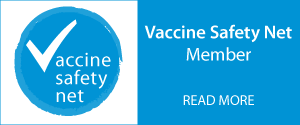Need for developing case definitions and guidelines for data Collection, Analysis, and presentation for respiratory distress in the neonate as an adverse event following maternal immunization:
Definition of respiratory distress in the neonate
Every year, an estimated 2.9 million babies die in the neonatal period (the first 28 days of life), accounting for more than half of the under-five child deaths in most regions of the world, and 44% globally [1]. The majority (∼75%) of these deaths occur in the first week of life, with the highest risk of mortality concentrated in the first day of life [2]. Ninety-nine percent of neonatal deaths occur in low- and middle-income countries; south-central Asian countries experience the highest absolute numbers of neonatal deaths, while countries in sub-Saharan Africa generally have the highest rates of neonatal mortality [2].
Respiratory distress is one of the most common problems neonates encounter within the first few days of life [3]. According to the American Academy of Pediatrics, approximately 10% of neonates need some assistance to begin breathing at birth, with up to 1% requiring extensive resuscitation [4]. Other reports confirm that respiratory distress is common in neonates and occurs in approximately 7% of babies during the neonatal period [3], [5]. Respiratory disorders are the leading cause of early neonatal mortality (0–7 days of age) [6], as well as the leading cause of morbidity in newborns [7], and are the most frequent cause of admission to the special care nursery for both term and preterm infants [8]. In fact, neonates with respiratory distress are 2–4 times more likely to die than neonates without respiratory distress [9].
Respiratory distress describes a symptom complex representing a heterogeneous group of illnesses [3]. As such, respiratory distress is often defined as a clinical picture based on observed signs and symptoms irrespective of etiology [7], [10]. Clinical symptoms most commonly cited as indicators of respiratory distress include tachypnea [3], [7], [8], [10], [11], [12], [13], [14], [15], [16], [17], nasal flaring [3], [7], [8], [10], [11], [12], [13], [14], [15], [17], grunting [3], [7], [8], [10], [11], [12], [13], [14], [15], [16], [17], retractions [3], [7], [8], [10], [11], [12], [13], [14], [15], [16], [17] (subcostal, intercostal, supracostal, jugular), and cyanosis [3], [7], [8], [10], [11], [13], [17]. Other symptoms include apnea [3], [8], bradypnea [8], irregular (seesaw) breathing [8], inspiratory stridor [3], [16], wheeze [16] and hypoxia [8], [14].
Tachypnea in the newborn is defined as a respiratory rate of more than 60 breaths per minute [12], [15], bradypnea is a respiratory rate of less than 30 breaths per minute, while apnea is a cessation of breath for at least 20 s [18]. Apnea may also be defined as cessation of breath for less than 20 s in the presence of bradycardia or cyanosis [18]. Nasal flaring is a compensatory symptom that is caused by contraction of alae nasi muscles, increases upper airway diameter and reduces resistance and work of breathing [8], [12], [15]. Stridor is a high-pitched, musical, monophonic inspiratory breath sound that indicates obstruction at the larynx, glottis, or subglottic area [15]. Wheezing is a high-pitched, whistling, expiratory, polyphonic sound that indicates tracheobronchial obstruction [15]. Grunting is an expiratory sound caused by sudden closure of the glottis during expiration in an attempt to increase airway pressure and lung volume, and to prevent alveolar atelectasis [8], [12], [15]. Retractions occur when lung compliance is poor or airway resistance is high, result from negative intrapleural pressure generated by contraction of the diaphragm and accessory chest wall muscles, and are clinically evident by the use of accessory muscles in the neck, rib cage, sternum, or abdomen [8], [15]. Finally, cyanosis is assessed by examining the oral mucosa for blue or gray discoloration and suggests inadequate gas exchange, while hypoxemia is signified by an oxygen saturation of less than 90% after 15 min of life [8].
Pathophysiology of respiratory distress in the neonate
Most causes of respiratory distress result from an inability or delayed ability of a neonate’s lungs to adapt to their new environment [14]. In utero, the lungs are fluid filled, receive less than 10–15% of the total cardiac output, and oxygenation occurs through the placenta [8], [19], [20], [21]. For the neonate to transition, effective gas exchange must be established [8], [22], alveolar spaces must be cleared of fluid and ventilated [20], [21], and pulmonary blood flow must increase to match ventilation and perfusion [14], [23]. A small proportion of alveolar fluid is cleared by Starling forces and vaginal squeeze [14], [23], however the overall process is complex, and entails rapid removal of fluid by ion transport across the airway and pulmonary epithelium [8], [20], [23]. Peak expression of these ion channels in the alveolar epithelium is achieved at term gestation, leaving preterm infants with a reduced ability to clear lung fluid after birth [14]. If ventilation or perfusion is inadequate, the neonate develops respiratory distress [14], [23].



